Looking For Specs Removal?
- Latest & Safest technology in Specs removal
- Free online specs removal consultation
- Sharpest vision with No hospitalization
- Bladeless, painless and stitchless
What is specs removal?
Specs removal involves surgical procedures to help you get rid of your contact lenses / eyeglasses & correct visual problems like nearsightedness, farsightedness and astigmatism. There are multiple technologies for specs removal such as LASIK, SMILE, ICL & Contura. LASIK laser surgery (Laser in situ Keratomileusis) is the most popular form of vision correction method used.
Spec Removal Options / Procedures
SMILE
SMILE is a step next to Contoura Vision. It is very commonly known as Flapless LASIK. In SMILE technology, only 1 laser known as a femtosecond laser is applied. The laser cuts out a part of tissue i.e Lenticule which is then dragged out by a little opening to produce vision correction.
The outcomes of SMILE in Hyperopia and Astigmatism are combined. So, in present the technology is used principally for Myopic corrections till extra research is made for full use.
LASIK
LASIK has been around for more than 25 years. It is the most commonly performed Specs removal procedure. In LASIK procedures, a laser is used to improve the curvature of the cornea to focus the light on the retina. LASIK is recognized as the least standard for someone opting for laser vision correction. Bladeless LASIK includes 2 steps done via laser:
- Femto-second Laser is used to produce a flap.
- Excimer Laser applied to change the curvature of the cornea to produce vision correction.
Bladeless LASIK is also very commonly known as iLASIK, Femto LASIK, All-Laser LASIK, etc. Today, more advanced techniques such as smile, contura and ICL have taken place of LASIK
Contoura Vision
Contoura Vision is a computer-guided topographic mapping procedure that maps microscopic contours of the cornea. This procedure operates irregularities of the curvature of the cornea as well as optics. Irregularities in the curvature of the cornea are usually the underlying problem of vision.
The surgery emphasizes the visual axis of the eye. In contrast, other LASIK procedures are focused on the pupillary axis. Contura vision is one of the safest and most advanced surgeries. The results are much better than traditional LASIK. At the same time, it is almost twice as expensive as LASIK
ICL Eye Surgery
ICL is micro-thin lenses that are inserted over the natural lens of the eye to induce vision correction. It is similar to a contact lens, just that a contact lens needs to wear daily and ICL is forever implanted in the eye.
ICL is normally advised for applicants whose LASIK surgery is not possible due to thin cornea, dry eyes or other issues.
RLE Surgery
RLE is also recognized as Refractive Lens Exchange. In this system, the natural lens of the eye is substituted with an artificial lens. It has the power of both the natural lens and spectacles. It is normally recommended when somebody is not fit for Laser and Lens Implant methods. A patient can take the design and quality of the lens and the procedure can be created with a mono-focal, multifocal, or a toric lens.
Refractive lens exchange, also named lens replacement surgery or clear lens extraction. RLE your eye’s clear natural lens with an artificial IOL to improve and correct your refractive error. Also, obtain sharper focus and decrease your need for reading glasses. RLE follows the same procedure as that of cataract surgery for the lens replacement.
LASIK vs Contoura Vision vs SMILE
Bladeless LASIK
- Clear Vision
- US – FDA certified
- Femto Laser + Excimer Laser
- Fastest Visual Recovery – Provides a Perfect Effect
- Digital tracking while Laser delivery
- Re-treatments possibilities
Contoura Vision
- Keen Vision Possibilities – Beyond 6/6
- US – FDA certified
- Femto Laser + Excimer Laser + Topolyzer
- specs Power rectification + Corneal Irregularities rectification+Visual Axis Treatment
- Quick Visual Recovery – Presents everyone a Wonderful Effect
SMILE
- Standard Vision
- US – FDA authorized
- Only Femto Laser
- specs Power Correction Possible Only
- Healing takes 5-12 days – No great Effect
- Manual Tracking – No Digital Tracking
- Re-treatments probable
Criteria for LASIK, Contoura Vision, Or ICL
Specs Number
- If you are Myopic, SMILE is a more suitable option over LASIK or Contoura Vision. SMILE is a 3rd generation laser-based system and a true bladeless-flapless-painless surgery.
- For the number between +4 D to -8 D- Contoura Vision is the most suitable option.
- For the number between -8 D to -18 D – ICL is a suggestible option.
Benefits
- SMILE: SMILE is a flapless, bladeless, and dressings-free surgery. The recovery takes a few days, about 7 – 10 days. The dry eye aftereffects of the surgery are less with a SMILE.
- ICL / Implants: ICL is the most advanced vision correction procedure adopted worldwide. The aspherical lens is fixed and placed over the natural lens of the eye surgically for vision correction errors asking remarkable results.
- Contoura vision: An improvement in spectacle removal surgery also recognized by Contoura Lasik. The high level of accuracy with the surgery is majorly due to the topographical mapping of the eye. Contoura works on the visual axis rather than the pupillary axis. This treatment on the visual axis brings intensified visual clarity.
- Femto LASIK (Blade free): Most high-level Lasik surgery in today’s day and age. A high level of protection and efficiency is guaranteed with Femto LASIK.
As a mainstream treatment for weak eyesight, LASIK is a safe procedure with very rare complications. Laser Specs removal surgeries performed by us have served people to leave their spectacles forever.
Specs removal Eye Surgery Cost
Specs removal surgery procedure costs depend greatly on the procedure that you go for. The more advanced the technology the higher the cost. Though, the cost also involves the expertise and education of the ophthalmologist performing the surgery. Only a few eye experts in India have the training and experience to do such procedures.
Eye Mantra hospital is one of the top eye hospitals offering Specs removal at the best prices. Bladeless LASIK procedure in Delhi may vary in cost between ₹65,000 and ₹90,000 (approx.) while the fees for a Contoura Vision correction ranges between ₹95,000 and ₹1,15,000 (approx.). Of course, the exact cost will vary according to the complexity of each case and the procedure used. Here’s a comparison on the cost:
| Treatment | Cost (₹) |
|---|---|
| Standard Lasik | 25000-30000 |
| C Lasik | 30000-40000 |
| I Lasik (Bladeless) | 80000 – 90000 |
| Contura Vision (Bladeless) | 100,000 – 130,000 |
| Smile (Bladeless / Flapless) | 100,000 – 130,000 |
Best eye hospital for specs removal
There are multiple good hospitals for specs removal surgery in India, including L.V. Prasad Eye Institute in Hyderabad and Sankara Nethralaya in Chennai, AIIMS and Eye Mantra. Eye Mantra Eye Centre is deemed to be the best place for specs removal surgery in Delhi & the NCR region.
At Eye Mantra, we are a team of skilled ophthalmologists who’re skilled in performing the LASIK, SMILE, Contura and ICL surgeries for everyone who uses spectacles or contact lenses.
If you are not satisfied with the contact lens and need to get relieved from wearing glasses- Then you can get Lasik laser, SMILE, Contoura Vision, or ICL done at Eye Mantra at affordable costs.
Glasses, Contact Lenses Or Laser Surgery – What’s Right?
Are you confused between glasses, contact lenses and LASIK surgery? Well, the answer primarily depends on 2 things : Preference and Budget:
Preference
Some people like wearing glasses, or contact lenses. Therefore, there is no need to go for the surgery. In case you do not plan to wear glasses then you can go for contact lens or Lasik laser, SMILE, Contoura Vision, and many more procedures. They are the best way to remove Specs and are an easy process without any pain.
Budget
Specs removal or Lasik Surgeries are costly. An eye surgery at a good center shall start at around 30,000. So glasses or lenses would cost you around 2000-3000 a year, at the same time. So if you have that budget, you can go for the specs removal surgery.
Specs Removal Benefits
About half the population of India has a vision problem. But, this is now easy to correct as specs removal surgery provides a safe and proper solution for practically all vision problems. Some of the benefits for specs removal surgery are:
- Get improved looks without glasses
- Get rid of spectacles / contact lenses
- Can also correct presbyopia.
- Can correct extreme vision problems. For example, a SMILE can normally correct short-sightedness of about minus 10 dioptres.
- Painless and bladeless
- Safe and US-FDA Approved.
Home Remedies to reduce eye number
- To improve the eye power and to remove spectacles, mustard oil or walnut oil acts as a complete remedy for this treatment, massage the soles of the feet with mustard oil or walnut oil.
- Walking barefoot on the green grass works for reducing the eye number
- Eyes stay healthy by washing the eyes with amla water or pouring rose water in the eyes daily.
- Avoid using hair color, hair dye, and chemical shampoo on the hair because it directly affects the eyes.
- Make a powder by mixing almonds, fennel, and sugar candy in equal measures. Mix 10 grams of this powder in 250 ml milk and take it every day before sleeping and it is very useful for reducing eye number.
- Practice some exercises like eye movements,
Our Team

Oculoplasty
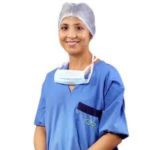
Femtosecond Lasik

Femtosecond Lasik
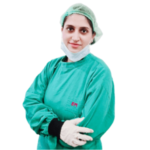
Cataract, Retina, Glaucoma, Lasik
Our Facilities
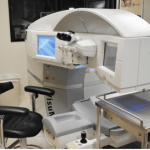
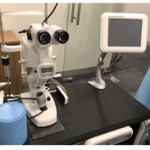

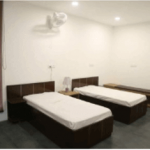
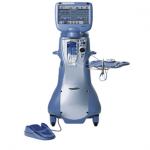


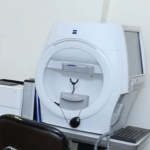
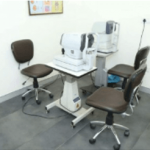
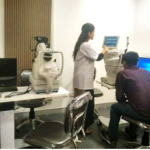
FAQ's
There are multiple technologies or procedures to get rid of specs or glasses such as LASIK, SMILE, ICL & Contura. LASIK laser surgery (Laser in situ Keratomileusis) is the most popular form of vision correction method used.
Yes, all specs removal or laser procedures are very safe and painless for spec removal as they are US-FDA approved procedures.
There are 97% chances of the people to be free from their spectacles. 3% will have mild change from their zero targeted correction due to diverse recovery patterns in different people but will have their decreased dependence on spectacles. After 3-6 months, a laser improvement can be tried to correct these people further. People of age 45, who have distance vision correction may require reading glasses.
Every surgery holds a surgical risk which is the reason Pre LASIK workup / Pre Tests are made so that any patient not eligible for the procedure can be ruled out. Some of the risks may include:
- Infections – Modern day antibiotics can simply control and tackle infections.
- Over or Under Correction – Can sometimes happen because of different healing responses of the body. This situation is rare and however if so happens, it can be efficiently managed by doing laser polishing after 6 months.
To be fit for laser surgery you have to meet some basic eligibility criteria
- Minimum 18 years old
- specs numbers must be stable for the last 6 months. Minor variations of 0. 25 D and 0.50 D are satisfactory.
- Ladies should not be pregnant or on breastfeed or 6 months post-pregnancy.
- You must not be consuming any medicines such as steroids.
After you meet these basic criteria, then you will have to undergo a Pre Lasik workup test which involves 6 to 7 different kinds of tests to eventually declare you the right candidate for laser surgery.
- Pre Lasik work up test involves a series of 6-7 tests that involve:
- Examining the power and pressures of your eye
- Monitoring your corneal thickness and any additional surface irregularities on the cornea.
- Examining for dry eyes
- Checking the Retina movement
This test normally takes 2 hours and if you use contact lenses it is best to stop them 3 days before you undergo these tests.
No laser surgery is flapless. Even surgeries like SMILE, which are said to be flap free, build a small flap. The only surgeries which are flap free are ICL, wherein a lens is inserted inside the eye that is implantation.
ICL i.e Implantable Collamer Lenses or phakic intraocular lenses are lenses implanted in the eye to work with the natural crystalline lens of the eye so that it can correct a refractive error with or without astigmatism. ICL can correct the big refractive error in the thin cornea.
The main contrast between ICL and traditional IOLs is the fact that an ICL operates in conjunction with the eye’s crystalline lens. It is even performed in a young patient who has no cataract. An IOL substitutes the eye’s natural lens during cataract surgery. IOLs are done to manage Cataract and ICL manage refractive error i.e helps in specs removal.
During the Small Incision Lenticule Extraction ( SMILE) procedure, the doctor uses eye drops to anaesthetize the eye. A speculum is then precisely placed on the lids to retain the eye open and to stop blinking. Using advanced femtosecond technology, the surgeon then performs a specific lenticule that is a thin and circular piece of tissue. The surgeon then eliminates the lenticule by the small incision that was formed in the eye. The process takes only 10-15 minutes.
A major difference between LASIK surgery and PRK is, LASIK creates a joint flap on the cornea. LASIK patients report minimum irritation and their vision stabilizes more swiftly than PRK. PRK involves operating the surface of the cornea. PRK recovery takes a few days with blurry vision and a bit of discomfort. It is often suggested when the patient’s cornea is extremely thin they must go for LASIK surgery.
Contoura Vision is a topography-guided laser system, which suggests that rather than just treating spectacle power it can also record and treat defects in individual corneas and optical systems, ending in a better focusing surface.
The procedure is also focused on the visual axis of the eye and giving better results compared to LASIK & SMILE. Studies have shown that patients who undergo Contoura treatment for vision correction have a 40% possibility of getting vision better than 6/6 vision is usually analysed the vision of normal people.
The outcomes of Laser on the cornea are permanent. Sometimes, internal changes within an eye may happen with age and these may have some effect on the all-over visual status.
Preparations before Laser Surgery :
- It is suggested to stop applying contact lens 1 week before surgery.
- Avoid applying perfumes, powder, makeup on eyes, and face on the day of Laser Surgery.
- Have a healthy and light meal before laser surgery.
- Apply the antibiotic eye drops in both the eyes as prescribed by your eye doctor, 6 times a day, one day before the procedure.
- Keep your eyes shut as much as possible after laser treatment on the surgery day.
- Wear dark glasses continuously during the day for the first 3 days. Also, It will serve as small protection against dust and exposure to sunlight.
When you plan to undergo any additional eye surgery it’s your responsibility to inform your doctor about previous surgery so that the treatment plan can be adjusted accordingly.
Recovery in procedures like Contoura Vision & LASIK is quick and from the very next day you can see everything crystal clear.
In procedures like SMILE and PRK, the healing is continuous and takes about 10 days to completely recover.
Some vitamin-rich diets like Carrot, pumpkin, sweet potato, etc. contain beta carotene, which is the source of vitamin A.
A diet must contain an extreme amount of vitamin C in orange, amla, tomatoes, capsicum, etc. Before bedtime, eating 1 spoon of amla powder can also increase eyesight. Also, Vitamin-E is very necessary to include in your diet: sunflower seeds, almonds, peanuts, spinach, soya bean, kiwi, mango, Turnip, etc. Vitamin A is very essential in removing spectacles and keeping eyes healthy. Eat more Vitamin A rich foods in your diet.
Having a good diet with green vegetables and nutritious fruits will help in maintaining healthy eyes and body. That said, No medicine, diets, or process can help in completely getting rid of eye glasses or contact lenses.
There are multiple good specs removal surgeons in India. Eye Mantra has some of the top specs removal doctors / surgeons. Dr. Shweta Jain is one of the best specs removal surgeons in India. Dr. Shweta Jain has successfully performed more than 1000+ LASIK, Contura and ICL surgeries so far. The results from the Eye Mantra specs removal surgery program turns out to be better for many people. Post specs removal surgery, multiple patients experience improved appearance, increased vision and improved depth perception